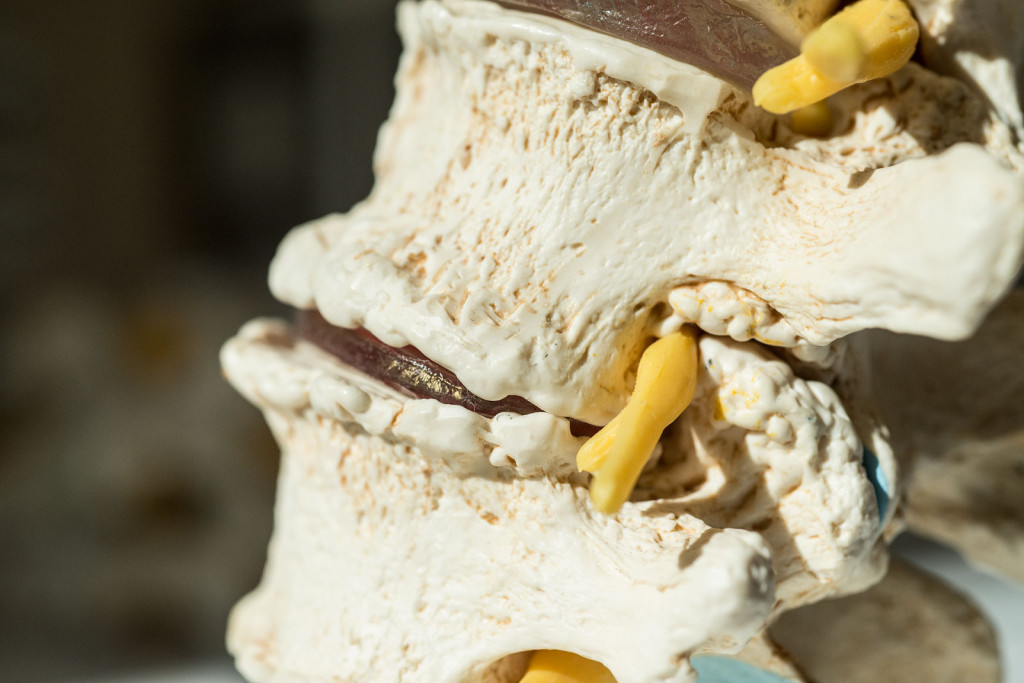Spinal stenosis
Narrowing of the spinal canal
Definition of the Spinal stenosis
Degenerative changes of the spinal joints (facet joints) and degeneration of the intervertebral disc narrow the spinal canal due to a new bone formation and thickening of the joint capsule and intervertebral ligaments.
The narrowing of the spinal canal leads to an impingement of spinal nerves that causes lower back pain and leg pain upon walking (claudication).
The narrowing of the spinal canal leads to an impingement of spinal nerves that causes lower back pain and leg pain upon walking (claudication).
The picture shows typical degenerative changes of spinal stenosis. The narrowing of the intervertebral disc and bone spur formations causes impingement of the spinal nerve.
Cause: Degenerative changes
Walking with an upright gait strains the human lumbar spine and may cause its degeneration. The disc height diminishes depending on age and strain. This leads to bony spur formations (osteophytes), bulging of the disc (osteochondrosis) and facet joint arthritis.
The combination of these degenerative changes causes narrowing of the spinal canal.
The combination of these degenerative changes causes narrowing of the spinal canal.
Symptoms: Claudication
Patients complain about low back pain upon standing and walking (spinal claudication). The pain radiates to the lower limbs already after a few steps. Thus, the patient’s walking ability decreases. As soon as patients rest, the pain diminishes.
How can a spinal stenosis be treated?
Mild symptoms can be eased by physical therapy or injection of steroids into the spinal canal.
Surgical treatment
If conservative treatment fails to relieve symptoms, a surgical treatment should be considered. Performing a microsurgical decompression of the spinal canal allows removing the bone spur formations millimetre-by-millimetre, freeing the pinched nerves without destabilizing the spine.
If instability is already present, different implants are used to stabilize the spine (spinal fusion).
If instability is already present, different implants are used to stabilize the spine (spinal fusion).
Post-surgical course
Usually, Patients will be able to stand and walk a few hours after surgery. They may leave the hospital within a few days.
Results
Surgical treatment achieves good to very good results. Patients suffer from considerably less back and leg pain. Quality of life is remarkably enhanced by the fact that walking pain will be absent.
On seldom occation, hematoma formations or impaired wound healing may require revision surgery.
Complications, such as paralysis or infections, are rare.
There is a chance that spinal stenosis may reappear years later.
On seldom occation, hematoma formations or impaired wound healing may require revision surgery.
Complications, such as paralysis or infections, are rare.
There is a chance that spinal stenosis may reappear years later.
